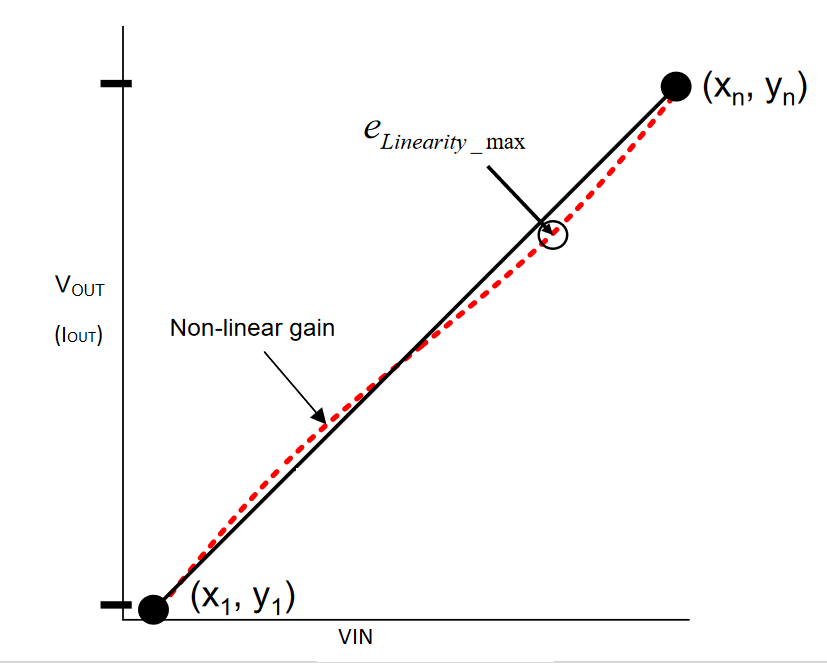Dear Specialists,
My customer is considering XTR300 and has questions.
I would be grateful if you could advise.
---Questions
I have a question about the specs of the XTR300AIRGWR.
I would like to know the definitions of Gain Nonlinearity in voltage output mode and Linearity Error in current output mode.
(Q1) "Gain Nonlinearity" in voltage output mode
Does this parameter correspond to the DNL of the A/D converter, or does it refer to the INL?
>> Monotonically increasing ⇒ I'm guessing DNL, is this correct?
(Q2) The unit of "Gain Nonlinearity" is "%FS".
(Example) If the output is ±10[V], it is FS20[V], so the worst error is 20[V]×0.1[%]=20mV
In case of 0 to 10[V] output?
10[V]×0.1[%]=10mV
Is it correct?
(Q3) The graph of "Nonlinearity vs Output Current" is shown in Figure 37 and Figure 38 in the datasheet.
If you have a graph of "Nonlinearity vs Output Voltage" please provide it.
(Q4) There is a "linearity error" item in the current output mode. Which correspond to INL or DNL of the A/D converter?
(Q5) "linearity error in current output mode" is also in "%FS".
(Example) If the output is ±20[mA], the Worst error is 40[mA]×0.1[%]=0.02mA
Is it correct?
---
I appreciate your great help in advance.
Best regards,
Shinichi



